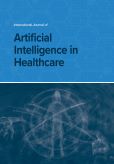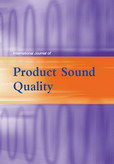Explore our journals
Browse journals by subject
Research picks
- Stormy weather moving in. It's raining, when?
A new algorithmic framework that can predict flooding could help us save lives and reduce the devastation as climate change drives more intense and unpredictable rainfall. The model described in the International Journal of Information and Communication Technology uses the Multi-Scale Adaptive Neuro-Fuzzy Inference System (MS-ANFIS) and combines deep learning with a form of fuzzy logic that quantifies uncertainty. Features that were missing from earlier data-driven flood models.
Flood prediction usually focuses on hydrological models that simulate how rainfall moves across landscapes and into rivers. These are grounded in environmental science but depend on detailed land-surface information and can be computationally expensive, limiting their usefulness for rapid or large-scale forecasting. Attempts to reduce the computing demands as well as speed up predictions using statistical and early machine-learning approaches have proved useful but still struggle to cope with diverse data sources or respond to highly localised events. Even cutting-edge deep-learning models, which can spot patterns in vast datasets, treat river systems as deterministic in behaviour and do not take into account the inherent variability that arises because of extreme weather.
MS-ANFIS might plug the holes in earlier approaches. It uses a feature pyramid network. This is a deep-learning architecture that extracts information at multiple scales. In doing so it can capture detailed runoff patterns and broader rainfall trends visible in satellite data. The fuzzy layer then interprets the data and expresses uncertainty in a structured, interpretable way. The result is flood prediction with a measure of confidence in the prediction built in.
The researchers have tested their system on data from five major river basins, covering markedly different weather patterns and hydrological behaviour. The model's confidence intervals quickly captured more than 90 per cent of extreme events. Such accuracy could help emergency planners judge when to trust, or question, a forecast in real-time. And so make provision for the impact of a likely flood ahead of it happening through reservoir management and evacuation decisions.
Zhao, H. and Xia, T. (2025) 'Flood disaster prediction using multi-scale deep learning and neuro-fuzzy inference', Int. J. Information and Communication Technology, Vol. 26, No. 41, pp.91–106.
DOI: 10.1504/IJICT.2025.149987 - Such a lovely place
Airbnb guests who feel a strong emotional bond with the platform are significantly more likely to help shape its services, according to research in the European Journal of International Management. The work sheds light on how digital platforms might cultivate loyalty in the sharing economy. The research looked at London-based travellers and their "brand love" for the platform. Brand love can play a decisive role in whether a customer engages in value co-creation with a product to effectively enhance the experience to the mutual benefit of both customer and company.
The researchers found that such an emotional attachment is built less on marketing messages than on how travellers perceive the identity of the platform and the quality of its website. When users view the platform as trustworthy, visually appealing and aligned with their own values, they are more inclined to take an active role in their stay. They will more often than not communicate with their hosts to personalise arrangements and in return offer detailed feedback to help the hosts better cater to future guests.
Such co-creation is increasingly important to digital businesses, of which Airbnb is just one of many. The customer is no longer a passive recipient of goods and services, but can help shape both the product and the way in which the wider community perceives that product or service.
The work in EJIM argue that such involvement not only improves the perceived value of the service but also deepens the users' sense of belonging. This is very much an outcome that modern digital companies in the sharing economy are keen to achieve.
The work is not only relevant to Airbnb itself, but to tourism managers and policymakers hoping to develop and foster meaningful user engagement.
Foroudi, P. and Marvi, R. (2025) "'Some like it hot': the role of identity, website, co-creation behaviour on identification and love", European J. International Management, Vol. 27, No. 4, pp.623–670.
DOI: 10.1504/EJIM.2025.150037 - Don't go hacking my chart
One of the big problems facing the use of digital systems in healthcare is the matter of security. Research in the International Journal of Medical Engineering and Informatics offers a new approach to defending against cyber-related patient-safety risks in the so-called smart hospital. The approach uses an anomaly-detection system that can analyse the full range of data generated by modern medical systems. By integrating numerical time-series analysis with image-based classification techniques it can identify irregularities that existing tools often miss.
Anomalies in this context are any unexpected deviations in a device's behaviour or data stream, whether a sudden spike in a sensor reading, a breach of a device's operating constraints, or an unusual pause in data transmission. While such events can indicate technical faults, they may also signal security breaches. Given that whole healthcare systems have been the subject of cyber-attack in recent years and suffered major outages as a result, there is a growing need for protection.
As hospitals begin to use more and more interconnected devices, such as monitors and wearable sensors, the vulnerabilities will only continue to grow. The researchers point out that even minor disruptions can cascade into clinical delays or expose systems to malicious interference.
The proposed system can manage the increasing complexity of electronic healthcare systems by using feature extraction to filter out the digital noise and highlight only the relevant relationships in the data.
One obstacle that is difficult to overcome is how to test and demonstrate the efficacy of the system, as there is a scarcity of real-life clinical datasets with which to work. The researchers plan to generate synthetic but representative datasets to evaluate each component of their detection architecture. They hope to develop it so that it can minimise false alarms while capturing irregularities in a timely manner. Their success will lead to security tools that could underpin digital healthcare as hospitals become ever more data-driven.
Haiba, S. and Mazri, T. (2025) 'Anomaly detection architecture for smart hospitals based on machine learning, time series, and image recognition analysis: survey', Int. J. Medical Engineering and Informatics, Vol. 17, No. 7, pp.1–14.
DOI: 10.1504/IJMEI.2025.149913 - Let the music play
Machine learning could improve the way learners are assessed when it comes piano performance. An approach described in the International Journal of Information and Communication Technology offers a more precise understanding of rhythm than earlier methods. The approach, PianoTrans-Fusion, combines audio, video, and MIDI data to evaluate timing and beat consistency, addressing limitations of earlier automated methods of assessment.
Conventional rhythm assessment usually relies on human observation. But, there are times when a student of the piano might wish to assess their own development in this area. Basic audio analysis can assist, but is generally slow and cannot capture the subtle timing variations that distinguish a skilled pianist from someone merely tickling the ivories.
Tools based on neural networks have improved objectivity, but typically focus only on audio, ignoring other informative signals. PianoTrans-Fusion's innovation lies in integrating multiple types of input and using a machine learning method that can detect patterns across long sequences. The system uses "self-attention" mechanisms, which allow it to weigh the relative importance of different moments in the performance, capturing fine-grained fluctuations in timing. By bring together information from sound and visual recordings of the performer, and the structured note data of a music file in the MIDI format, the new model constructs a detailed map of the performance.
In tests using the MAESTRO dataset, a large collection of professionally recorded piano performances, PianoTrans-Fusion outperformed five baseline systems. It showed improved rhythm consistency and reduced beat errors. These findings suggest the system could provide a more reliable foundation for tasks such as automated accompaniment or performance evaluation.
Future work may expand the diversity of datasets, allowing the researchers to optimize the algorithm for efficiency, and to link rhythm assessment to broader aspects of musical interpretation, such as style and emotional expression.
Deng, J. (2025) 'Piano performance beat assessment: integrating transformer with multimodal feature learning', Int. J. Information and Communication Technology, Vol. 26, No. 41, pp.74–90.
DOI: 10.1504/IJICT.2025.149992 - Don't get your knickers in a twist
Urban Indonesian women are turning to luxury lingerie as a discreet form of self-expression. Research in the International Journal of Business Innovation and Research suggests that private, emotionally driven motivations now play a bigger role in luxury consumption than public displays of status. The study, based on survey responses from 309 women aged 20 to 45, argues that in a culture shaped by modesty and social restraint, intimate apparel has become a quiet vehicle for identity, confidence, and emotional reassurance.
The research used Structural Equation Modelling, a statistical method that tests how multiple psychological factors interact, to determine what most strongly influences women's intentions to buy luxury lingerie. They found that attitude towards the product is the key driver of the decision to purchase, as one might expect. Self-concept, defined as an individual's perception of who they are or aspire to be, and emotional attachment to the product also both feed into the decision. Together, they shape whether consumers feel a piece of luxury lingerie fits their sense of self and enhances their emotional well-being.
Interestingly, the research showed that brand trust did not matter much in making a purchase decision. For such items, worn privately, rather than displayed publicly, the researchers suggest, emotional resonance outweighs confidence in a brand's reliability or reputation. Social media, however, emerged as an outlier in the decision-making process. The personal identity-associated factors worked through attitude, but digital exposure exerted a direct influence on purchase intention. The research suggests that online content, influencer, and targeted advertising, can pique interest in private luxury.
The team points out that "inconspicuous luxury consumption" perhaps sits better in Indonesia's society, where overt indulgence might attract disapproval. Luxury lingerie allows women to navigate ambition and cultural expectations at the same time. The value of such private clothing lies less in visibility than in the feelings of refinement, femininity, and control it can afford. This understanding, of course, feeds into how luxury brands can better sell their goods in such socially conservative markets.
Mores, H. and Pradipto, Y.D. (2025) 'Adoption barriers of luxury lingerie as an inconspicuous consumption product', Int. J. Business Innovation and Research, Vol. 38, No. 6, pp.1–29.
DOI: 10.1504/IJBIR.2025.149936 - Aye, aye robot
People working alongside robots has, to a degree, been a part of the industrial landscape for many years. But researchers writing in the International Journal of Manufacturing Research, suggest that human-robot collaboration is set to transform modern manufacturing by combining the adaptability of humans with the precision and speed of robots.
Unlike conventional industrial robots, which excel at repetitive, high-accuracy tasks but struggle with variability, collaborative systems would allow humans and robots to work side-by-side in shared workspaces. This would be particularly suited to complex assembly and production environments, where flexibility and nuanced decision-making are essential.
Recent advances emphasise multimodal interaction, in which robots can interpret and respond to human speech, gestures, touch and perhaps even brain signals, allowing them to respond dynamically in real time. Voice commands are an obvious and common means of control, although they do not necessarily work well in noisy factory settings. Gesture recognition provides a non-verbal alternative, capturing hand, arm, facial, and full-body movements to convey instructions. By integrating skeletal tracking and motion capture, robots might anticipate human actions and adjust their movements safely and efficiently.
Physical interaction is also evolving through haptic technologies, which allow operators to guide robots directly using touch. Adaptive control techniques, including sensorless admittance and impedance control, translate these contact forces into precise robotic movements, enabling responsive and safe collaboration. Complementing this, digital twin simulations allow manufacturers to optimise assembly processes and predict human behaviour before applying changes on the factory floor, bridging the gap between virtual planning and real-world execution.
The integration of advanced sensing, AI-driven interpretation, and flexible control strategies might also help manufacturing evolve into a more intuitive, efficient, and adaptive enterprise. Multimodal human-robot collaboration might improve assembly efficiency and safety but might also lay the groundwork for factories where human and robotic strengths are combined, opening new possibilities for intelligent, collaborative production systems.
Liu, S., Liu, Z., Qin, Q., Wang, X.V. and Wang, L. (2025) 'Multimodal human-robot collaboration: advancements and future directions', Int. J. Manufacturing Research, Vol. 20, No. 5, pp.1–47.
DOI: 10.1504/IJMR.2025.149872 - Game on
The growing fitness app market is being shaped less by technical features than by the power of play, according to research in the International Journal of Business and Emerging Markets that has examined what keeps users returning to digital workout platforms.
The research has focused on China, which has more than 400 million fitness app users and an annual market value exceeding USD 14billion. It could be said that China leads the world in fitness app adoption. Users frequently combine several apps with wearable devices such as smartwatches to track workouts, monitor health metrics, and follow guided exercise programmes. That said, keeping users engaged remains a challenge, as many abandon apps once the novelty wears off and their initial motivation fades or their routines change. As such, understanding what might drive sustained use has become a priority for developers and marketers alike.
The study has found that among a sample of several hundred Chinese fitness app users, gamification, the incorporation of game-like elements such as badges, challenges, leaderboards, and rewards, can play an important role in encouraging long-term engagement. The researchers examined four behavioural factors commonly associated with technology adoption: performance expectancy (the perceived usefulness of the app), social influence (the impact of peers and community), hedonic motivation (the enjoyment derived from use), and habit. Surprisingly, none of these factors directly predicted whether a user would carry on using an app, but those factors did influence how much users interacted with the gamified features and so in turn determined ongoing engagement to a degree.
The findings indicate that gamification acts as a crucial intermediary. It can convert expectations, social context, enjoyment, and habits into sustained app use. Features such as progress tracking, interactive storytelling, and peer challenges were particularly effective, the team found. They point out that in China's collectivist society, where social cohesion and community participation are culturally emphasised, gamified peer interactions were particularly strong.
Gong, Y. and Yi, J. (2025) 'Gamified features as a mediator of fitness app engagement: a cross-sectional study', Int. J. Business and Emerging Markets, Vol. 17, No. 6, pp.1–29.
DOI: 10.1504/IJBEM.2025.149818 - Environmentalism and the Dark Triad
Research in the International Journal of Environment, Workplace and Employment has looked at the psychological factors that might affect an employee’s engagement with workplace environmental initiatives. The work shows that one of the “darker” personality traits, usually seen as a negative can influence pro-environmental behaviour in a perhaps surprising way.
The researchers studied the so-called “Dark Triad” of personality, Machiavellianism, narcissism, and psychopathy, and their association with voluntary environmentally responsible actions. These actions are known formally as organisational citizenship behaviour for the environment (OCBE). OCBE encompasses discretionary activities such as recycling, conserving energy, and reducing waste, which are not a prerequisite of environmental efforts, but can significantly improve sustainability goals in the workplace.
Using statistical methods including hierarchical regression and mediation analysis, the study found distinct patterns among the traits. Employees high in Machiavellianism, characterised by strategic calculation and goal-oriented thinking, were more likely to engage in OCBE. This suggests that individuals with a strong focus on personal gain may participate in environmental initiatives if they see a clear advantage, such as career progression or benefits to their own reputation. Psychopathy, marked by impulsiveness and a lack of empathy, however, was associated with lower levels of OCBE, indicating resistance to environmental programmes. Narcissism, defined by self-focus and a desire for admiration, showed no direct link to environmental behaviour.
When the team looked deeper into the data, they could see that egotism, altruism, and biospheric values could reflect the reasons individuals might act environmentally. Egotistical values, which prioritise personal benefit, boosted the influence of both narcissism and, unexpectedly, psychopathy on OCBE. In contrast, altruistic behaviour and biospheric values, linked to concern for others or the planet, generally did not mediate the relationship, except that biospheric values weakened engagement among those with psychopathic tendencies. In other words, environmentally driven appeals rooted in genuine ecological concern were less effective for individuals predisposed to psychopathy.
The findings highlight the complex interplay between personality, values, and sustainability in an organisational setting. The team suggests that interventions aimed at increasing employee participation in environmental initiatives might benefit from focusing on personal incentives, particularly for those with Machiavellian or egotistical characters. Conversely, strategies emphasising moral or ecological duty may not resonate with individuals high in psychopathy.
Lau, J.L., Jamaluddin, A. and Zainudin, N. (2025) ‘Do dark personality traits predict environmental citizenship at work? A mediation analysis of value orientations’, Int. J. Environment, Workplace and Employment, Vol. 9, No. 3, pp.197–215.
DOI: 10.1504/IJEWE.2025.149706 - Genius is part inspiration, part perspiration, but also a whole lot of personality
An individual's assessment of their own creativity and their assumptions about how others judge them are driven by different personality traits, according to research published in the International Journal of Business Innovation and Research. The study look at the so-called Big Five personality traits among participants and found that the perceptions of how innovative a person feels operate as a separate psychological construct in terms of how organisations identify and support creative work.
The Big Five model categorises personality into openness to experience, conscientiousness, extraversion, agreeableness and neuroticism. The researchers found that openness and extraversion were the strongest predictors of both self-perceived "innovativeness" and a person's perception of how they feel others view their innovativeness. These two traits are commonly linked to imagination, curiosity and sociability, seem to shape a person's confidence in generating new ideas but also their expectation when it comes to peer recognition.
Other traits had more uneven effects. Conscientiousness, defined as the tendency to be organised and dependable, and neuroticism, reflecting emotional sensitivity and susceptibility to stress, did not increase the belief in creativity. Yet, both these traits were associated with higher "meta-perception", implying that individuals who score highly on them may be viewed as innovative by others even if they do not see themselves that way.
Agreeableness, associated with cooperation and consideration for others, gave the most complex result. Its influence on perceived innovativeness shifted depending on whether participants rated themselves or speculated about external judgements. A more detailed analysis suggests that agreeable individuals had a heightened attentiveness to social cues, and that this may widen the gap between their inner assessment of their own creativity and their expectations of how others see them.
The work thus highlights the distinction between traits that foster idea generation, openness and extraversion, and those that matter in turning ideas into workable solutions, where conscientiousness often plays a critical role. For organisations, the study points to a need for greater nuance in how a company identifies innovative potential. Relying solely on an employee's self-confidence or on the visibility of outspoken, idea-driven personalities might risk overlooking quieter contributors whose strengths lie in implementing or refining ideas, for instance.
Jirásek, M. and Sudzina, F. (2025) 'The association between personality traits and perceived innovativeness', Int. J. Business Innovation and Research, Vol. 38, No. 3, pp.314–331.
DOI: 10.1504/IJBIR.2025.149643 - Seeding a new coffee substitute
Roselle seeds, an often discarded by-product of the Hibiscus sabdariffa plant, could offer a viable caffeine-free alternative to coffee, according to new research in the International Journal of Food Safety, Nutrition and Public Health. The work has looked at the nutritional value of the seeds as well as their taste and aroma. The team found that Roselle seeds roasted for half an hour could be used to brew a beverage that had a flavour, aroma and body very close to traditional coffee and better than many existing substitutes. It was also shown to contain high levels of antioxidant compounds thought to have health benefits.
There is a growing interest in substitutes for coffee, and a market for tasty drinks that do not have the stimulant effects of caffeine. Many of the "herbal" type brews that have been marketed do now replicate coffee's depth of flavour nor and complexity and are more akin to herbal teas.
The researchers point out that Roselle is cultivated for its tart, ruby-coloured calyces, the outer part or sepals of its flowers. These are used to make teas and syrups. However, the plant also contains protein-rich seeds that take on new chemical properties when roasted. The team compared unprocessed Roselle seeds with batches roasted for 10, 20, and 30 minutes. They measured bioactive components including antioxidant flavonoids and phenols, as well as tannins and saponins. They found that roasting consistently increased the concentration of these potentially beneficial molecules.
However, it was the sensory testing that was perhaps most important and revealed the true potential of the Roselle seed as a coffee substitute. Participants rated the 30-minute roast highest for flavour, taste, body, and overall acceptability. While the Roselle brews were no real competition for commercial coffee for coffee lovers, the longer roast did score close to true coffee.
If Roselle seeds can be developed into a satisfying, caffeine-free brew similar to coffee, they could add value to a crop already grown in many tropical regions, reduce agricultural waste and offer consumers a more convincing alternative to coffee in the same way that Rooibos (Aspalathus linearis) and similar products have given tea drinkers an alternative to traditional tea.
Oduntan, A.O., Olatunji, O.A., Rapheal, D.O., Oni, O.M., Mustapha, B.O., Ahmed, R.S., Fasuan, T.M. and Akinrinola, A.O. (2025) 'Development and evaluation of coffee substitute from roselle (Hibiscus sabdariffa) seeds', Int. J. Food Safety, Nutrition and Public Health, Vol. 6, No. 4, pp.231–250.
DOI: 10.1504/IJFSNPH.2025.149675
News
Prof. Yiping Wang appointed as new Editor in Chief of International Journal of Aerodynamics
Prof. Yiping Wang from Wuhan University of Technology in China has been appointed to take over editorship of the International Journal of Aerodynamics.
Prof. Shancang Li appointed as new Editor in Chief of International Journal of Information Privacy, Security and Integrity
Prof. Shancang Li from Cardiff University in the UK has been appointed to take over editorship of the International Journal of Information Privacy, Security and Integrity.
Prof. Chi-Yuan Chen appointed as new Editor in Chief of International Journal of Computational Intelligence Studies
Prof. Chi-Yuan Chen from National Ilan University and Fo Guang University in Taiwan ROC has been appointed to take over editorship of the International Journal of Computational Intelligence Studies.
Dr. Hsin-Hung Cho appointed as new Editor in Chief of International Journal of Information Quality
Dr. Hsin-Hung Cho from National Ilan University in Taiwan has been appointed to take over editorship of the International Journal of Information Quality.
Dr. Noman Sohail appointed as new Editor in Chief of International Journal of Computational Medicine and Healthcare
Dr. Noman Sohail from Linköping University in Sweden has been appointed to take over editorship of the International Journal of Computational Medicine and Healthcare.




